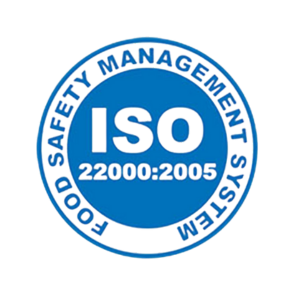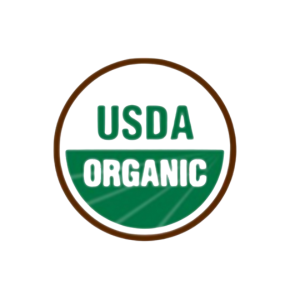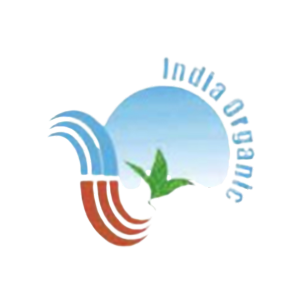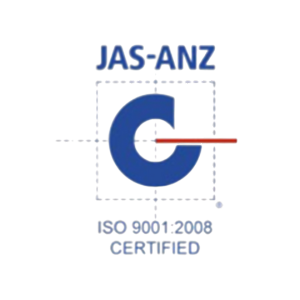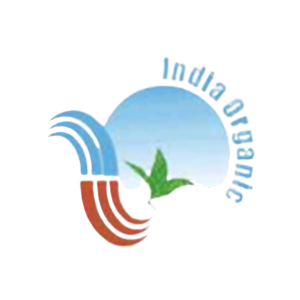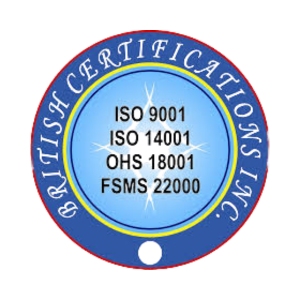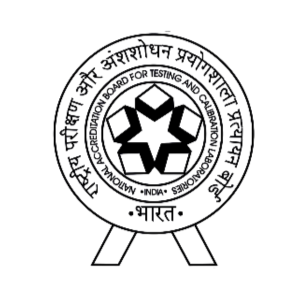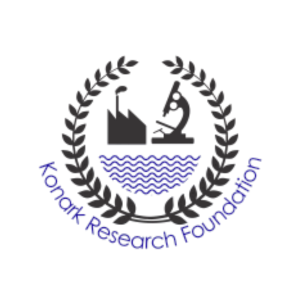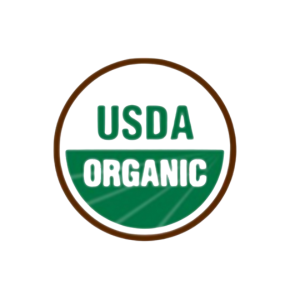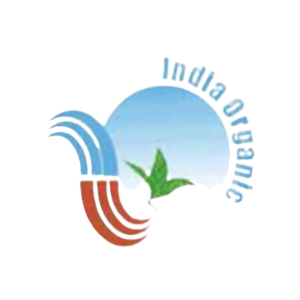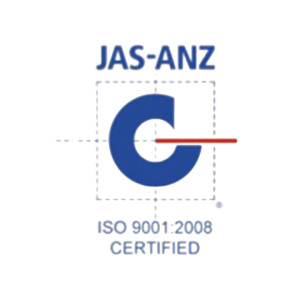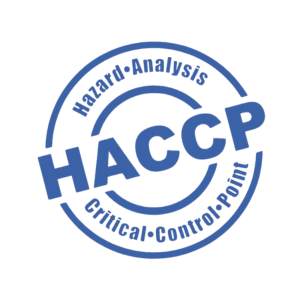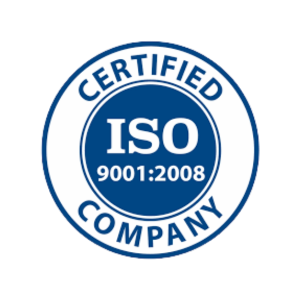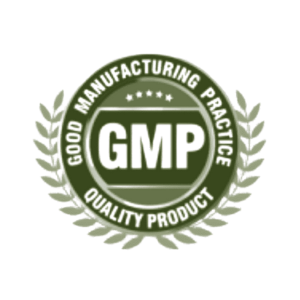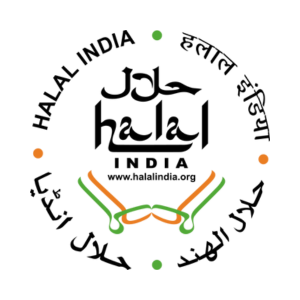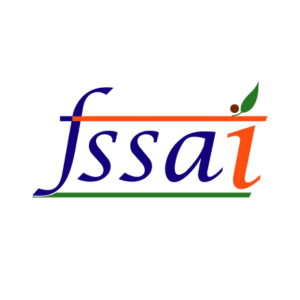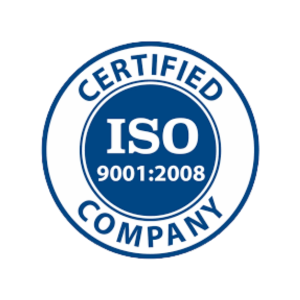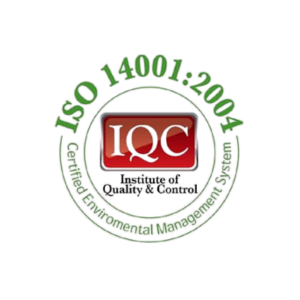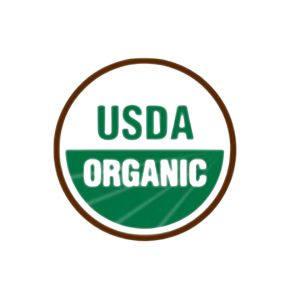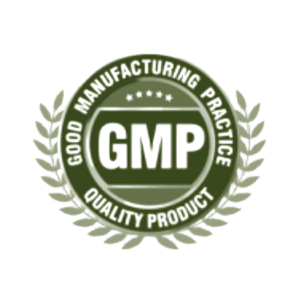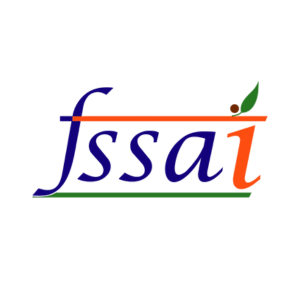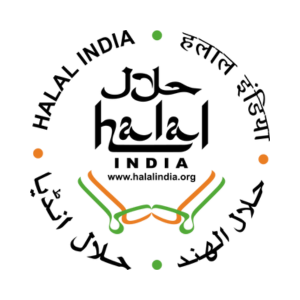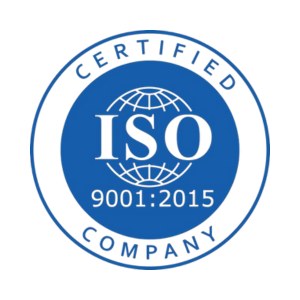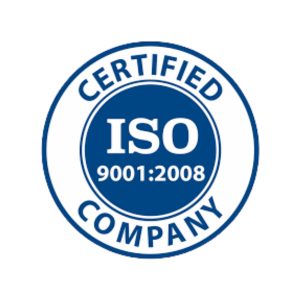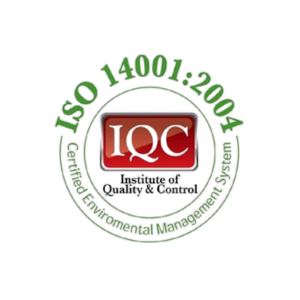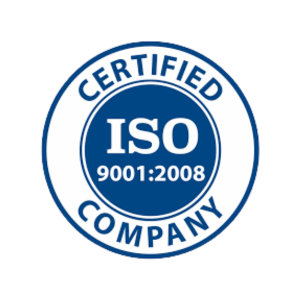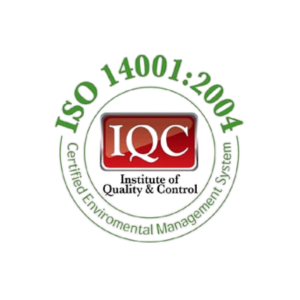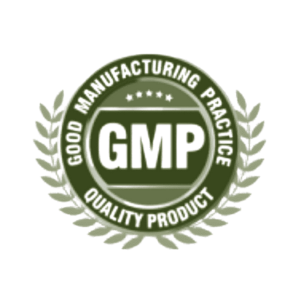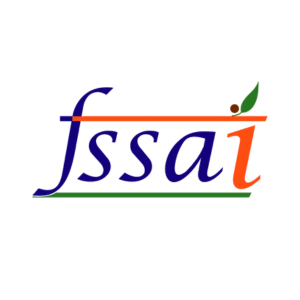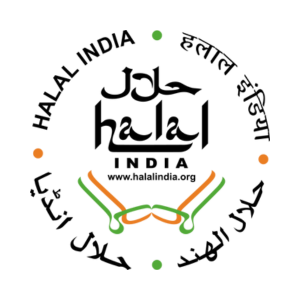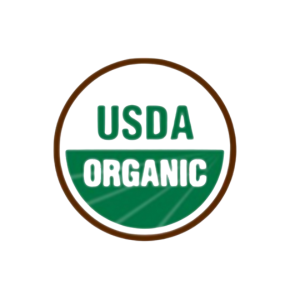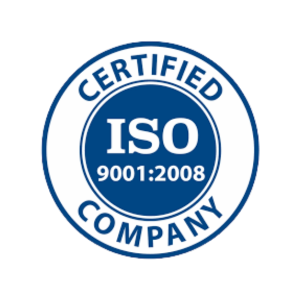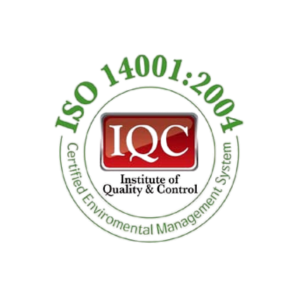Ashwagandha
Latin Name: Withania Somnifera
Part Of Plant Used: Roots
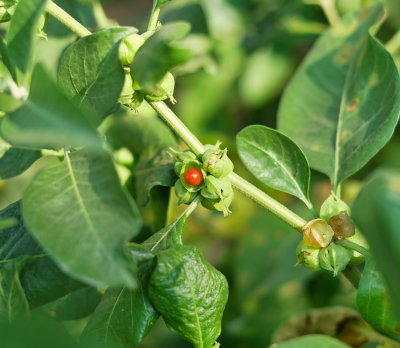
Ashwagandha (Withania Somnifera) is a well-known Ayurvedic herb, valued for its roots, leaves, and berries. The extract—light in color and bitter in taste—is derived from select, handpicked roots. Traditionally used for vitality and rejuvenation, Ashwagandha is also a powerful adaptogen, helping the body manage stress. Its active compounds, withanolides, provide steroidal lactones. Higher potency of withanolides in Ashwagandha means stronger effects.
Key Benefits
- Powerful antioxidant and immune booster
- Withanolides activate enzymes and macrophages (Th1 helper cells), that can engulf diseases before they manifest – defending the body against parasitic, bacterial, and viral infections.
- Studies show that ashwagandha increases white blood cell counts, platelet counts, stem cells in the bone marrow, and the amount and diversity of antibodies produced in the body.
- Its extracts have the ability to stimulate the production of nitric oxide in the body. This causes a dilatation of the blood vessels that carry blood to the genitals, leading to increased sexual desire.
- It helps increase the testosterone levels in men.
- The neuro-protective qualities repel free radicals and prevent them from damaging cells in the brain. Age-related degenerative diseases can be prevented and longevity increased.
- Maintains heart health through its regulation of blood circulation. It helps to prevent blood clots, stabilises blood sugar, and controls cholesterol levels in the body.
- It is one of the rare herbs with an adaptogenic property which is both energising and calming at the same time. It works holistically on the entire body to bring it back to homeostasis (internal balance) and help it to function efficiently. For example, it could provide energy to someone feeling sluggish or it can have a calming effect on the nerves of someone feeling tense and anxious.
Cultivation:
Northern states of India.
Extraction Process
has been standardized for: 5% Withanolides No additives/carriers |100% water extracted |natural material| Non-GMO verified by NSF International (Certification No: C-128885-2020).
Drug Interactions:
Immunosuppressants [like azathioprine (Imuran), basiliximab (Simulect), cyclosporine (Neoral, Sandimmune), daclizumab (Zenapax), muromonab-CD3 (OKT3, Orthoclone OKT3), mycophenolate (CellCept), tacrolimus (FK506, Prograf), sirolimus (Rapamune), prednisone (Deltasone, Orasone), corticosteroids (glucocorticoids), and others.] and Sedatives (like clonazepam (Klonopin), diazepam (Valium), lorazepam (Ativan), and others.) have moderate interactions with Ashwagandha. Please consult with your physician before consuming Ashwagandha.Pregnant or breastfeeding women should not take ashwagandha.
Clinical studies
The roots of Withania somnifera consist primarily of compounds known as Withanolides, which are steroidal and bear a resemblance, both in their action and appearance, to the active constituents of Asian ginseng (Panax ginseng) known as ginsenosides.
Subclinical Hypothyroidism: Subclinical hypothyroidism, a thyroid disorder without obvious symptoms, affects 3%–8% of the global population. Ashwagandha (Withania somnifera), a traditional Ayurvedic medicine, is often used for thyroid dysfunctions. This pilot study aimed to evaluate the efficacy and safety of ashwagandha root extract in subclinical hypothyroid patients.Conducted at Sudbhawana Hospital in Varanasi, India, from May to September 2016, the study was a prospective, randomized, double-blind, single-center placebo-controlled trial. Fifty subjects aged 18 to 50 with elevated serum thyroid stimulating hormone (TSH) levels (4.5–10 mIU/L) were randomized into treatment (n = 25) or placebo (n = 25) groups for 8 weeks. The treatment group received ashwagandha root extract (600 mg daily), while the placebo group received starch.Results showed that ashwagandha significantly improved serum TSH (p < 0.001), T3 (p = 0.0031), and T4 (p = 0.0096) levels compared to placebo. Four subjects (two from each group) withdrew before the second visit. Ashwagandha treatment normalized thyroid indices significantly over the 8-week period. Mild and temporary adverse effects were reported by four subjects (8%)—one from the ashwagandha group and three from the placebo group.The study concluded that ashwagandha may be beneficial for normalizing thyroid indices in subclinical hypothyroid patients.
https:// doi.org/10.1089/acm.2017.0183
Stress and anxiety reduction: A Randomized Double-Blind, Placebo-Controlled Study of Safety and Efficacy of a High-Concentration Full-Spectrum Extract of Ashwagandha Root in Reducing Stress and Anxiety in Adults at Ashwins Health Care and Research Centre - Hyderabad, India, using a total of 64 subjects with a history of chronic stress, each enrolled into the study after performing relevant clinical examinations and laboratory tests. These included a measurement of serum cortisol, and assessing their scores on standard stress-assessment questionnaires. They were randomized to either the placebo control group or the study drug treatment group, and were asked to take one capsule twice a day for a period of 60 days. In the study drug treatment group, each capsule contained 300 mg of high-concentration full-spectrum extract from the root of the Ashwagandha plant. The treatment group that was given the high-concentration full-spectrum Ashwagandha root extract exhibited a significant reduction on all the stress-assessment scales on Day 60 than the placebo group. The serum cortisol levels were substantially reduced in the Ashwagandha group, than the placebo group.
Spermatogenic Activity: A two-arm, double-blind, randomized, placebo-controlled, parallel-group study with random allocation was conducted at five infertility centres in India under the guidelines of the Indian Council for Medical Research (ICMR-GCP), using 46 infertile men, all having a history of regular sexual intercourse over a one-year period with a gynecologically normal female partner with no apparent female infertility. The study subjects were randomized to either: (i) the placebo-treated group (25) or (ii) the Ashwagandha-treated group (21) that were administered one capsule (containing 225 mg of a high-concentration full-spectrum root extract of the Ashwagandha plant with a withanolide content of 5%) orally, thrice daily for a period of 12 weeks. The ashwagandha treated group testing with higher parameters of semen concentration and increased serum hormone levels than the placebo group.
https://www.hindawi.com/journals/ecam/2013/571420/
Male sexual health:There have been several studies on the effect of ashwagandha in male sexual health. The results have demonstrated that treatment of infertile men (with suboptimal levels of testosterone) with 5 grams per day of ashwagandha root extract significantly increased serum testosterone and luteinizing hormone levels and reduced the levels of follicle-stimulating hormone and prolactin compared to the control group. There was also a substantial increase in sperm count, concentration, and motility among infertile men. Another experimental study from 2016 also reported increased testosterone with M-A-T combo (Mucuna Pruriens, Ashwagandha and Tribulus Terrestris). M-A-T 1 group received 10 mg Mucuna, 10 mg Ashwagandha and 10 mg Tribulus, while M-A-T 2 received 20g of each. Both groups had considerable increased testosterone, follicle-stimulating hormone and luteinizing hormone levels.
Ginger
Latin Name: Zingiber Officinale
Part Of Plant Used: Roots and rhizomes
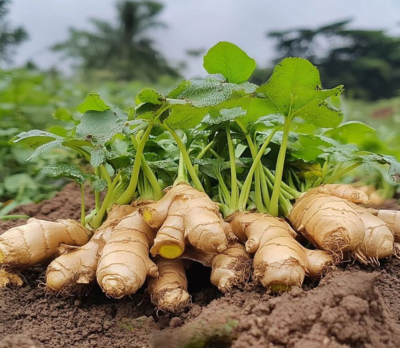
Ginger (Zingiber officinale) is a widely used spice and medicinal herb, long revered in Ayurveda and Traditional Chinese Medicine. Native to Southeast Asia, its name comes from the Sanskrit shringavera, meaning “horn-shaped,” referring to its knobby rhizome. Ginger is known for its immune-boosting, digestive, and anti-inflammatory benefits, and is traditionally used to relieve nausea. It’s also considered an aphrodisiac, supporting libido and vitality, while offering cardiovascular support by helping lower blood pressure and cholesterol. With mild diuretic properties, it may aid in managing kidney stones and urinary tract health — making ginger a go-to in both kitchens and healing traditions around the world.
Key Benefits
- Digestive Aid: Ginger is known to stimulate digestion, relieve gastrointestinal discomfort, and reduce symptoms of nausea, bloating, and indigestion.
- Anti-inflammatory Properties: Ginger contains bioactive compounds such as gingerol, which have potent anti-inflammatory effects, making it beneficial for alleviating symptoms of arthritis and other inflammatory conditions.
- Immune Booster: Ginger is rich in antioxidants and has antimicrobial properties that help strengthen the immune system, protect against infections, and reduce the severity of colds and flu.
- Nausea Relief: Ginger is effective in relieving nausea and vomiting associated with motion sickness, pregnancy, chemotherapy, and post-operative recovery.
- Pain Management: Due to its anti-inflammatory properties, ginger may help reduce muscle pain, soreness, and menstrual cramps.
- Heart Health: Ginger has been shown to lower blood pressure, reduce cholesterol levels, and improve circulation, thereby supporting cardiovascular health and reducing the risk of heart disease.
- Blood Sugar Control: Some studies suggest that ginger may help regulate blood sugar levels and improve insulin sensitivity, making it beneficial for individuals with diabetes or those at risk of developing the condition.
- Weight Management: Ginger may aid in weight loss by increasing metabolism, reducing appetite, and promoting feelings of fullness, potentially contributing to healthy weight management.
- Cognitive Function: Preliminary research suggests that the antioxidants in ginger may have neuroprotective effects, potentially enhancing brain function and protecting against age-related cognitive decline.
- Anti-cancer Properties: Some studies have indicated that ginger may possess anti-cancer properties, inhibiting the growth and spread of cancer cells and potentially reducing the risk of certain types of cancer.
Cultivation:
Kerala, Karnataka, India
Extraction Process
has been standardized for: 5% Gingerols
Clinical studies
Improved Gastric Emptying: In a randomized double-blind study involving eleven patients with functional dyspepsia, the effects of ginger on gastric function were investigated. Patients ingested ginger capsules or a placebo, followed by a low-nutrient soup. Gastric emptying was found to be faster after ginger consumption compared to placebo. Additionally, there was a trend for increased antral contractions with ginger. However, there were no significant differences in fundus dimensions, gastrointestinal symptoms, or gut peptide concentrations between the ginger and placebo groups. This suggests that while ginger stimulated gastric emptying and antral contractions in patients with functional dyspepsia, it did not affect gastrointestinal symptoms or gut peptides.
Antiflatulent: In a randomized controlled trial involving fourteen healthy young male volunteers, the effect of ginger on lower esophageal sphincter (LES) and esophageal peristalsis was investigated using manometry. Participants consumed either water or a ginger suspension and underwent esophageal manometry measurements over 180 minutes. Results indicated that while LES resting pressures remained unchanged after ginger consumption, percent relaxation during swallowing increased significantly at various time points. Esophageal contraction amplitude and duration were unaffected, but contraction velocity decreased at certain intervals after ginger intake. These findings suggest that ginger may enhance LES relaxation and reduce esophageal contraction velocity, potentially facilitating gastric gas expulsion or exerting an antiflatulent effect.
Antimotion sickness effect: In a study involving twenty-eight human volunteers, the antimotion sickness activity of ginger root (Zingiber officinale) was evaluated alongside its effects on gastric function. Participants were subjected to timed head movements in a rotating chair until they reached a motion sickness endpoint. Each subject received either ginger, scopolamine, or a placebo. While scopolamine significantly reduced motion sickness symptoms compared to placebo, ginger provided no protection. Gastric emptying rates were slowed immediately after motion sickness symptoms but less so after 15 minutes. However, powdered ginger had no effect on gastric emptying. Additionally, gastric motility was altered during motion sickness, with an increase in electrogastrogram frequency. While powdered ginger partially inhibited this frequency increase, it did not enhance electrogastrogram amplitude in motion sick subjects. These findings suggest that ginger lacks antimotion sickness activity and has minimal effects on gastric function during motion sickness.
Improved breast milk production: A randomized, double-blind controlled trial compared breast milk volume between lactating mothers taking 500 mg dried ginger capsules twice daily and those receiving a placebo for 7 days postpartum. The study involved 63 women (30 in the ginger group and 33 in the placebo group) and measured breast milk volume on the third day using the test weight method over 24 hours, and on the seventh day using a 1-hour milk production measurement. On the third day, the ginger group had significantly higher milk volume (191.0 ± 71.2 mL/day) compared to the placebo group (135.0 ± 61.5 mL/day, p < 0.01). By the seventh day, there was no significant difference between the groups (ginger group: 80.0 ± 58.5 mL, placebo group: 112.1 ± 91.6 mL, p = 0.24). Serum prolactin levels were similar in both groups, and no side effects were reported. The study concluded that ginger could be an effective natural galactagogue in the early postpartum period without notable side effects.
https:// 10.1089/bfm.2016.0073
Ginseng
Latin Name: Panax Ginseng
Part Of Plant Used: Root
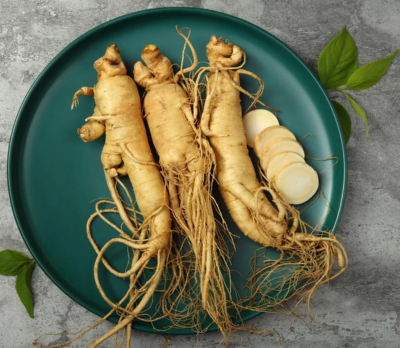
Panax Ginseng, also known as Asian or Korean Red Ginseng, is a powerful adaptogenic root long revered for its ability to energise the body, boost immunity, and enhance circulation. Its potent compounds—ginsenosides and gintonin—offer antioxidant, anti-inflammatory, and even anti-tumour benefits. Often used to support testosterone levels, sexual health, and menopausal balance, Panax Ginseng lives up to its Greek name Panax, meaning “cure-all”, by promoting vitality and overall well-being across systems.
Key Benefits
- Adaptogens are those that can help to release stress and help a person to relax. Panax Ginseng is one of the known adaptogens that helps to fight depression, anxiety, and headaches.
- Panax Ginseng helps to improve memory and the thinking skill among middle aged people.
- With enormous amounts of antioxidant, it reduces the chances of viral infection by boosting the immune system.
- Panax Ginseng has also been considered as an aphrodisiac in the medical science. It is used to treat sexual dysfunction by improving symptoms of erectile dysfunction in men and enhances sexual performances.
- The inflammatory property in panax ginseng slows down the growth of cancerous cells in the body.
- Panax Ginseng is famous for increasing libido and satisfaction among postmenopausal women.
- It helps to fight fatigue in both men and men and kicks off the tiredness even after a tiring day.
- It reduces the sugar level in the blood among diabetic people.
Cultivation:
Himachal Pradesh, India
Extraction Process
was carried out for 20% ginsenosides using a 20:1 herb ratio.
Clinical studies
Erectile Dysfunction:
- Korea Food Research Institute, Sungnam, South Korea, conducted a systematic review to evaluate the evidence for the effectiveness of red ginseng for treating erectile dysfunction, searching 20 electronic databases without language restrictions. All randomized clinical studies (RCT) of red ginseng as a treatment of erectile dysfunction were considered for inclusion. Collectively these RCTs provide evidence for the effectiveness of red ginseng in the treatment of erectile dysfunction.
- A double-blind crossover study evaluating the efficacy of Korean red ginseng in patients with erectile dysfunction was conducted by the Department of Urology, University of Ulsan College of Medicine, Korea. Using a total of 45 patients with clinically diagnosed erectile dysfunction in a double-blind, placebo controlled, crossover study, over 8 weeks on treatment, 2 weeks of washout followed by another 8 weeks on treatment. 900mg of Ginseng was administered 3 times a day to the treatment group and a placebo was given to the control group. The Mean International Index of Erectile Function scores were significantly higher in patients treated with the ginseng than in those who received placebo. The trial concluded that ginseng can be an effective alternative for treating male erectile dysfunction.
Cognitive Function: The Korean Longitudinal Study on Cognitive Aging and Dementia conducted an observational study on the effects of lifetime cumulative ginseng intake on the cognitive function in an elder population.3918 participants completed the 2-year and 4-year follow-up evaluations. Subjects were categorized according to cumulative ginseng intake in no use group, low use group, and high use group. The high use group showed higher CERAD total scores compared to the no use group. The trial concluded in confirming that a prolonged use of ginseng for longer than 5 years may be beneficial to cognitive function in late life.
Diabetes:
- Risk Factor Modification Centre, St. Michael's Hospital, Canada and the Department of Nutritional Sciences, Faculty of Medicine, University of Toronto, Canada, conducted a research review to study the effect of ginseng on glycemic control through data analysis of randomized controlled trials in people with and without diabetes. The result of the review showed that Ginseng significantly improved fasting blood glucose in people with and without diabetes.
- The Human Cognitive Neuroscience Unit, Division of Psychology, Northumbria University, UK, conducted a study to assess the glycaemic effects of single doses of Panax ginseng in young healthy volunteers, using 30 participants through a placebo-controlled, double-blind cross-over. The thirty participants received three treatments: placebo; 200mg Ginseng; 400mg Ginseng. The study demonstrated that ginseng alone significantly lowers fasting blood glucose levels.
Menopausal: Department of Obstetrics and Gynecology, Institute of Women's Life Medical Science, Korea, conducted a double-blind, randomized, placebo-controlled clinical trial to investigate the effects of Red Ginseng on surgical menopause symptoms in premenopausal women with gynaecologic cancer, using 55 premenopausal women diagnosed with gynaecologic cancer. The study was performed at Severance Hospital in Seoul, Korea. Patients were randomly assigned to two groups Treatment group of 29 patients, receiving 3g red ginseng per day or a placebo control group of 26 patients, for a period of 12 weeks. Through the study, Red ginseng did not show absolute relief of surgical menopause symptoms in premenopausal women after gynecologic cancer surgery. However, the study did demonstrate that KRG may be effective in reducing sexual complaints.
Sexual Function in women: The Psychiatric Research Center, Roozbeh Hospital, Iran conducted a 6-week, double-blind, randomized, placebo-controlled clinical trial, using 31 participants in each group – controlled and treatment, to evaluate the effects of a combined vitamin E and ginseng supplement on enhancement of female sexual function. The volunteers were randomly allocated to receive the supplement (100 IU vitamin E, 67 mg Korean ginseng, and 40 mg Siberian ginseng) or placebo daily. The treatment group found significantly heighted levels of sexual desire and satisfaction compared to the placebo group. However, the study could not find additional benefits for the vitamin E and ginseng supplement over placebo in enhancing the overall sexual function.
Antioxidant: Liver and Immunology Research Center, Daejeon Oriental Hospital, South Korea conducted a double-blind randomized controlled design, using 82 healthy participants (21 men and 61 women). They were divided into three groups, the control group received a placebo and the other two groups received the ginseng extract (1g and 2g/day respectively) for 4 weeks. The findings indicate that ginseng enhanced the antioxidant defence mechanism in the treatment groups and the results reinforce the use of Panax ginseng as a potential antioxidant supplement.
Gokhru
Latin Name: Tribulus Terrestris
Part Of Plant Used: Fruit
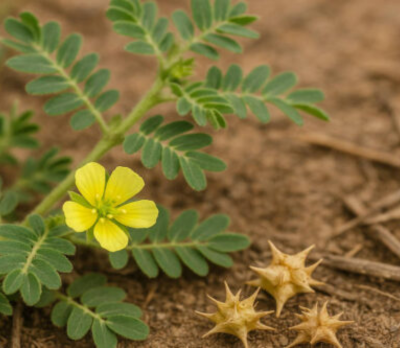
Tribulus terrestris, or Gokhru, is an Ayurvedic herb known for its immunity-boosting, aphrodisiac, and rejuvenating properties. Its name comes from Sanskrit: ‘Go’ (cow) and ‘Aakshura’ (hoof), as its fruits resemble cow hooves. Traditionally recommended for male health, Gokhru supports virility, vitality, and is especially beneficial for cardiovascular and urogenital health. Also used in Traditional Chinese medicine, it’s widely taken as a supplement for its libido-enhancing and potential testosterone-boosting effects. Gokhru also helps manage high blood pressure, high cholesterol, kidney stones, erectile and sexual dysfunction, and acts as a diuretic.
Key Benefits
- Lactation Support: Gokhru is known to enhance lactation by stimulating milk production, making it beneficial for mothers experiencing low milk supply.
- Hormonal Balance: It helps in regulating hormonal levels, which is crucial for postpartum recovery and maintaining overall health during breastfeeding.
- Urinary Health: Gokhru supports urinary tract health, preventing infections and promoting proper urinary function, which can be particularly beneficial after childbirth.
- Anti-Inflammatory Properties: Its anti-inflammatory effects help reduce postpartum inflammation and discomfort, aiding in faster recovery.
- Energy and Vitality: The herb is known to boost energy levels and combat fatigue, which is essential for new mothers managing the demands of newborn care.
- Enhanced Immunity: Gokhru strengthens the immune system, helping new mothers fend off infections and stay healthy during the postpartum period.
- Digestive Health: It aids in improving digestion and alleviating gastrointestinal issues, which are common postpartum concerns.
Cultivation:
Madhya Pradesh, India
Extraction Process
has been standardized for: 40% Steroidal Saponins
Interactions:
Not for use during pregnancy or lactation.
Clinical studies
Improving minor ailments in pregnant women: The study aimed to evaluate the effects of Madhuyasti (Glycyrrhiza glabra) and Gokshura (Tribulus terrestris) on minor ailments during pregnancy. 60 pregnant women were divided into two groups - group A received Madhuyasti and Gokshura, while group B received only standard antenatal care. The study found that the trial drugs were effective in reducing common pregnancy-related issues like anorexia, nausea, vomiting, heartburn, and constipation compared to the control group. The drugs also showed beneficial effects on maternal health and pregnancy outcomes. The authors conclude that Madhuyasti and Gokshura can be helpful in managing minor ailments and maintaining the health of pregnant women.
https://www.phytojournal.com/archives/2018/vol7issue3/PartAK/7-3-495-702.pdf
Green Tea
Latin Name: Camellia sinensis
Part Of Plant Used: Leaves
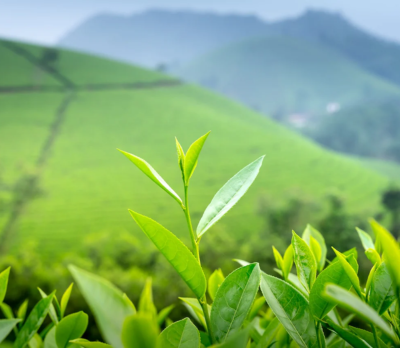
Green Tea Extract, derived from the steamed leaves and buds of Camellia sinensis, is packed with antioxidants, polyphenols, and catechins that support heart health, fat metabolism, and liver function. With a natural mix of caffeine and L-theanine, it helps sharpen focus, improve mood, and reduce stress. Rich in vitamins A, B, C, and D, green tea also aids digestion, blood sugar control, and has long been used in traditional medicine for its healing and detoxifying powers.
Key Benefits
- Rich in Catechin makes green tea one of the best sources of antioxidants with inflammatory properties.
- Antioxidant in green tea takes care of your heart. It slows down the oxidisation process of the LDL (bad cholesterol) particles in the blood and prevents blockages in the artery.
- It increases metabolism and boosts energy, helping to exercise more and burn excess fat in the body.
- Chances of type 2 diabetes are lowered with green tea consumption.
- Green tea strengthens bones and decreases the risk of osteoporosis, brittle bones, and keeps bones in good health especially in women experiencing menopause.
- Women experience severe hot flashes and mood changes through perimenopausal and menopausal phase of their life. Green tea has the ability to calm and relax.
- The EGCG (Epigallocatechin gallate) is a type of antioxidant present in green tea extract. It is responsible for healthy brain function by lowering the risk of diseases like Parkinson’s and Alzheimer’s.
- Green tea contains natural chemicals which are an amazing source of energy and endurance. The caffeine in green tea in conjunction with L-Theanine plays with the mood of the women and keeps her active even after a tiring day.
- Green tea slows the skin aging process and retains its glow. It has the ability to help reduce the chances of acne and treats puffiness around the eyes naturally.
- The polyphenols in green tea help in maintaining a healthy digestive system by reducing the time taken by the body to break down food.
Cultivation:
Tamilnadu, India
Extraction Process
has been standardized for: 90% Polyphenols using a herb extraction ratio of no less than 10:1
Clinical studies
Heart Health: The Department of Pharmaceutical Chemistry, International Medical University, Malaysia, conducted a study to compile the preclinical and clinical studies that had been done on EGCG (compound Epigallocatechin-3-gallate which is a major polyphenolic compound present in green tea) to investigate its protective effect on cardiovascular diseases.
Research papers related to EGCG were obtained from the major scientific databases, resulting in the understanding that EGCG held a wide range of therapeutic properties including cardiovascular protection, anti-diabetes, anti-inflammatory and antioxidant.
Burning of Fat –
- The Department of Physiology, Faculty of Medicine, University of Geneva; Geneva University Hospital; and Laboratoires Arkopharma, Nice, France conducted an investigation on the fat oxidation effects of green tea, using 10 healthy men that were randomly assigned among 3 treatments: green tea extract (50 mg caffeine and 90 mg epigallocatechin gallate), caffeine (50 mg), and placebo, which they ingested at breakfast, lunch, and dinner. It was concluded that Green tea has heat producing properties and promotes fat oxidation.
- The Human Performance Laboratory, The University of Birmingham, UK, conducted 2 studies to investigate the effects of green tea extract (GTE) on glucose tolerance and fat oxidation during moderate-intensity exercise. Both studies were a counter-balanced crossover. In study A, 12 healthy men performed a 30-min cycling exercise at 60% of oxygen consumption before and after supplementation. In study B, 11 healthy men took an oral-glucose-tolerance test before and after supplementation. In the 24-h period before the experimental trials, participants ingested 3 capsules containing either GTE or a corn-flour placebo. Average fat oxidation rates were 17% higher and there was a simultaneous increase of 13% in insulin sensitivity after ingestion of GTE than after ingestion of placebo. It was concluded that GTE ingestion can increase fat oxidation during moderate-intensity exercise and can improve insulin sensitivity and glucose tolerance in healthy young men.
Blood Pressure – The Department of Primary Care Health Sciences, University of Oxford, UK conducted a systematic review to evaluate the effectiveness of green tea on blood pressure and lipid parameters. Electronic searches were conducted in Medline, Embase, Amed, Cinahl and the Cochrane Library to identify relevant human randomized clinical trials (RCTs). As many as 474 citations were identified and 20 RCTs comprising 1536 participants were included. It was concluded that Green tea intake results in significant reductions in systolic blood pressure, total cholesterol, and LDL cholesterol. The effect size on systolic blood pressure is small, but the effects on total and LDL cholesterol appear moderate. Longer-term independent clinical trials evaluating the effects of green tea are warranted.
Green Teas effect on skin – A Double-blind, placebo-controlled trial of green tea extracts was done to evaluate the effects of a combination of topical and oral green tea supplementation to treat aging resulting from UV damaged skin, by the Department of Dermatology, Emory University, USA. A total of 40 women with moderate photoaging (aging resulting from UV exposure) were randomized to either a combination of 10% green tea cream and 300 mg twice-daily green tea oral supplementation or a placebo regimen for a period of 8 weeks. Participants that were administered the combination of topical and oral green tea showed an improvement in the elastic tissue content.
Cancer preventive: The Department of Epidemiology, Saitama Cancer Center Research Institute, Japan, conducted a study to understand the association of green tea consumption and cancer. They surveyed 8,552 individuals over 40 years of age living in a town in Saitama prefecture on their living habits, including daily consumption of green tea, over a period of 9 years. The study showed that green tea has a potentially preventive effect against cancer among humans.
Type 2 diabetes:The Public Health, Department of Social and Environmental Health, Osaka University, Japan conducted a Retrospective cohort study across 25 communities in Japan, using a total of 17,413 persons (6727 men and 10,686 women) to evaluate the effect of green, black, and oolong teas as associated with a lowering the risk for type 2 diabetes. The participants were between the ages of 40 to 65 years with no history of type 2 diabetes, cardiovascular disease, or cancer at the baseline lifestyle survey. During the 5-year follow-up, it was concluded that consumption of green tea, coffee, and total caffeine was associated with a reduced risk for type 2 diabetes.
Jaiphal/Nutmeg
Latin Name: Myristica fragrans
Part Of Plant Used: Seed
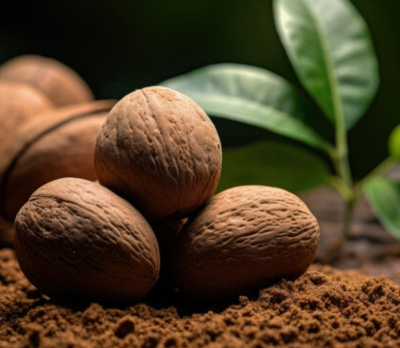
Nutmeg, or Jaiphal, is the seed of the nutmeg fruit, prized in Indian cooking for its sweet, piquant flavour — from biryanis to desserts. The seed is encased in a lacy membrane that’s dried and used separately as the spice mace. Native to Indonesia’s spice islands, nutmeg trees are now also grown in Malaysia, the Caribbean, and Southern India. Nutmeg is rich in antioxidants that protect against ageing, heart disease, liver damage, and cancer. It’s also high in fibre, aiding digestion and blood sugar control. Key compounds include essential oils, fatty oils, resins, and minerals.
Key Benefits
- Potent Anti-inflammatory Effects: Jaiphal has essential volatile oils like myristicin, elemicin, eugenol and safrole with powerful anti-inflammatory properties. It is well-known to ease muscles and joint pain and lessen swelling.
- Brain Health: The essential oils are effective in alleviating stress. The adaptogen nature of nutmeg works both as a stimulant and a sedative.
- Nutmeg has a calming effect when consumed in smaller doses. Various ancient medicinal practices credit it for its sleep-inducing and de-stressing effects. According to Ayurveda, you should add a pinch of nutmeg to a glass of warm milk and have it before sleeping.
- It helps in the secretion of digestive enzymes, bringing relief and promoting bowel movement. The carminative effect helps remove excessive gas from the system and ease any digestive issues you may be suffering from.
- Jaiphal helps eliminate toxins from the liver and kidneys and cleanse the system.
- The antibacterial properties help against harmful bacteria that cause dental cavities and gum disease. Additionally, the essential eugenol oil aids in easing toothaches.
- The antimicrobial and anti-inflammatory properties of Jaiphal help the skin’s natural glow and radiance. The cleansing property wards off blackheads, treats acne, and unclogs the pores. The bioactive compound macelignan in Jaiphal aids in slowing down premature ageing and its oil is well-known for its skin rejuvenating properties.
- Its high mineral content makes nutmeg a good ingredient for regulating blood circulation and pressure. It contains calcium, iron, potassium, and manganese which are all essential for various functions in the body.
Cultivation:
Kerala, India
Extraction Process
has been standardized for: 6% Volatiles using a 5:1 herb ratio and ensuring the content of Phenyl Propanoid remains unchanged in the extraction process
Interactions:
Nutmeg should always be used in smaller doses whether in cooking or home remedies for treating various ailments. If used in larger doses, it can cause nausea, hallucination and palpitations.
Kapikachhu| Mucuna
Latin Name: Mucuna Pruriens
Part Of Plant Used: Fruit
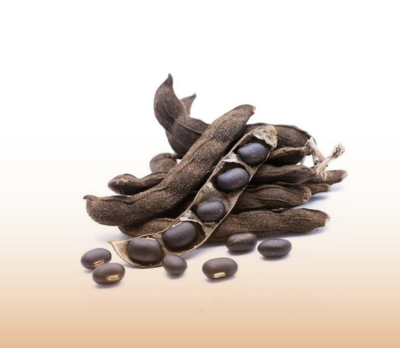
Kapikachhu (also known as Mucuna Pruriens or Velvet Bean) is a tropical legume prized for its dopamine-boosting power. Its seeds are naturally rich in L-DOPA, a direct precursor to dopamine—a key neurotransmitter that supports mood, focus, motivation, memory, and stress response. Traditionally used as a libido enhancer and natural mood elevator, Kapikachhu also helps improve motor control, digestion, and sleep, thanks to its broad neuro-supportive and anti-inflammatory effects. A natural pick-me-up for both body and mind.
Key Benefits
- Mucuna has been used for thousands of years as a remedy for male infertility, nervous disorders, Parkinson’s disease, and as an aphrodisiac.
- Sometimes called “magical velvet beans,” this magic refers to its potential to improve brain health.
- Also known as the “dopamine bean” since it is a good source of L-Dopa, from which dopamine is made in the body. The effects of L-DOPA include:
- Improve sleep quality
- Helps in smooth muscle contractions which help improve digestive function and boost proper elimination of wastes from the body
- Enhances mood – the dopamine action helps reduce stress levels, improve mood, and alleviate symptoms of depression
- Increase libido (men and women), increase sperm count, enhance blood circulation to the genitals, strengthen and tone the sexual glands
- Increase the level of bio-available testosterone
- By raising low dopamine levels, it can have a positive effect on motivation, attention span, the ability to relax, and general mental well-being
- The antioxidant properties of Mucuna offer protection against damage caused by oxidative stress and other activities like protein damage or DNA strand breakage.
- Deficiency of dopamine causes a nervous disorder called Parkinson’s Disease. Several global resources are researching L-DOPA use for its treatment.
- Dopamine, which is associated with pleasure, also plays a critical role in muscle control. L-Dopa is synthesized in the brain into dopamine and is used as a treatment in Parkinson’s disease.
- Mucuna is a powerful aphrodisiac used in the management of male sexual disorders. It increases mood and sexual performance.
- It has been traditionally used to improve sperm count and motility.
- Often referred to as “nature’s chill pill,” Mucuna is an adaptogenic herb and contains a unique set of phytonutrients that feed the adrenals, balance hormones, and significantly reduce stress levels by lowering cortisol.
Cultivation:
Andhra Pradesh, India
Extraction Process
has been standardized for 40% L-DOPA using a 15:1 herb ratio
Clinical studies
Male Health:
- Department of Biochemistry, C.S.M. Medical University, Lucknow, India, conducted a prospective study to understand the effects of Mucuna pruriens in the treatment of male infertility. 75 normal healthy fertile men (control group) and 75 men undergoing infertility screening (treatment group) were used in this clinical study. It was observed that treatment with Mucuna significantly improved Testosterone, Luteinizing Hormones, dopamine, adrenaline, and noradrenaline levels in infertile men and reduced levels of Follicle stimulating hormones and Prolactin levels. Sperm count and mobility were significantly increased in infertile men after treatment. It was concluded that the treatment with Mucuna regulates improves semen quality in infertile men.
- Department of Biochemistry, Department of Obstetrics & Gynaecology, Department of Urology and Department of Psychiatry, King George's Medical University, Lucknow India, undertook a study using 120 men between the ages of 30-38 years - 60 of them were undergoing infertility screening and were found to be suffering from psychological stress. The other 60 were healthy men having normal semen parameters and who had previously initiated at least one pregnancy. It was observed that oral administration of Mucuna (5g day) to infertile men for 3 months not only resulted in general improvement in sperm count and mobility but it also led to significant reduction in the level of psychological stress. On the basis of results, it was be concluded that Mucuna not only reactivates the anti-oxidant defence system of infertile men but it also helps in the management of stress and improves semen quality.
Kokilaksha
Latin Name: Hygrophilla spinosa
Part Of Plant Used: Seeds
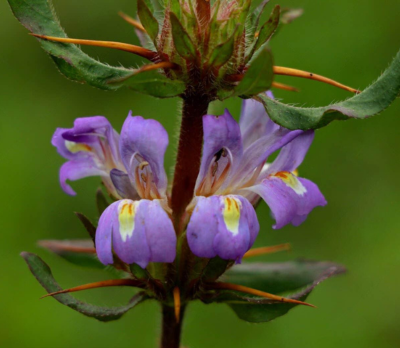
Kokilaksha, also known as Hygrophilla spinosa, is a revered Ayurvedic herb primarily used for supporting reproductive, urinary, and joint health. The name "Kokilaksha" translates to "eyes like a cuckoo bird," referencing the attractive appearance of its seeds. Traditionally, it has been a potent ingredient in formulations to address male sexual wellness, water retention, liver health, and rheumatic conditions.
Key Benefits
- Aphrodisiac and reproductive tonic: Enhances male libido, semen quality, and performance. Often used in classical Ayurvedic formulations for male infertility.
- Diuretic and kidney support: Promotes healthy urine flow and is helpful in water retention, urinary tract infections, and renal stones.
- Hepatoprotective: Aids in liver function, detoxification, and metabolic balance.
- Anti-inflammatory and joint health: Traditionally used in the management of arthritis, gout, and joint pain due to its soothing properties.
- Strengthens muscles and nerves: Acts as a tonic to improve stamina, neuromuscular strength, and recovery.
Cultivation:
Eastern and Southern India (Odisha, Karnataka, Andhra Pradesh)
Extraction Process
has been standardized for: 1% Volatiles using a 10:1 herb ratio and ensuring the content of natural steroids remains intact in the extraction process
Clinical studies
- As an aphrodisiac and fertility enhancer: Male infertility and reduced sexual vitality are growing concerns worldwide, with oxidative stress and declining testosterone being major contributors. In Ayurvedic medicine, Kokilaksha has been traditionally used as a vrishya dravya (aphrodisiac). A preclinical study evaluated the effect of ethanolic extract of Asteracantha longifolia on the reproductive performance of male rats over 28 days. Results showed a significant increase in sperm count, sperm motility, and testicular weight, along with elevated serum testosterone levels. These effects are attributed to the plant’s phytosterols and alkaloids, confirming its efficacy as a natural fertility enhancer and aphrodisiac. (Ancient Science of Life, Vol. 26, Issue 2, 2006).
- As a hepatoprotective agent: Liver disorders caused by toxins or poor lifestyle choices are becoming increasingly prevalent. In a controlled animal study, Asteracantha longifolia was evaluated for its hepatoprotective potential against carbon tetrachloride-induced liver toxicity. The extract demonstrated normalization of elevated liver enzymes such as SGOT, SGPT, and ALP, and showed significant histological restoration of liver tissues. These effects were comparable to silymarin, the standard liver-protective drug, suggesting strong hepatoprotective activity. (Indian Journal of Pharmacology, 2010).
- As a diuretic and anti-inflammatory: Edema, water retention, and inflammatory disorders are often managed with pharmacological diuretics and steroids, which may have long-term side effects. A study evaluating the aqueous extract of Asteracantha longifolia in rat models showed a marked increase in urine output and electrolyte excretion. The extract also significantly reduced paw edema in a carrageenan-induced inflammation model, supporting its traditional application as a safe, plant-based diuretic and anti-inflammatory agent. (Journal of Ethnopharmacology, 2004).
Safed Musli
Latin Name: Chlorophytum Borivilianum
Part Of Plant Used: Root
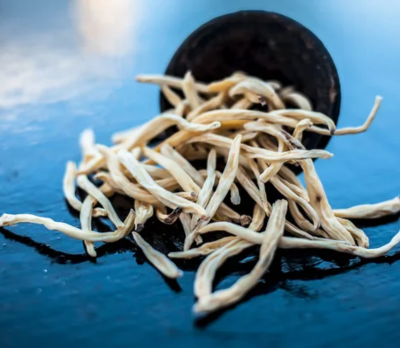
Safed Musli, often called “White Gold”, is a prized Ayurvedic herb known for its adaptogenic and aphrodisiac properties. Its white roots are rich in saponins, polysaccharides, and essential nutrients like proteins, alkaloids, and vitamins. Used traditionally to boost vitality, relieve stress, and support sexual health, Safed Musli is so valued for its medicinal effects that it’s been listed among the top conservation-worthy herbs by India’s Medicinal Plants Board.
Key Benefits
- Safed Musli has a calming effect that helps in relieving stress, anxiety, and depression, therefore works as an effective mood enhancer in both men and women.
- It contains Stigmasterol, another Saponin, which adds aphrodisiac properties to Safed Musli.
- It helps boost vitality and sexual health in men, increasing their stamina and testosterone levels and simultaneously boosting libido.
- Hecogenin, a kind of Saponin in Safed Musli, helps to build strong muscles, makes bones strong, and decreases the risk of osteoporosis.
- Presence of a high amount of antioxidants makes Safed Musli a powerful immune booster.
- The anti-inflammatory and pain-relieving properties reduce pain, inflammation, and swellings.
- The antioxidant properties of Safed Musli help to break down the free oxygen radicals in the body, slowing the growth of chronic cells.
- Safed Musli is rich in polysaccharides, which ensure the moisture content in the skin is balanced, and that it is soft, supple, and clean.
Cultivation:
Madhya Pradesh, India
Extraction Process
was carried out for 20% saponins using a 5:1 herb ratio.
Clinical studies
Adaptogen: A prospective, randomized, placebo-controlled, double-blind comparative pilot study was conducted by the Department of Pharmacology and Therapeutics, Seth G S Medical College and KEM Hospital, Mumbai, India, to evaluate the adaptogenic effect of Chlorophytum borivilianum (CB) on physical performance when exposed to accustomed activity (AA) and unaccustomed activity (UA) and the effect of CB on heart rate (HR) and blood pressure (BP) in the presence of UA and the effect on muscle strength in comparison with placebo. 60 volunteers were assigned randomly into two groups - study drug that were 3 g of CB per day or placebo (3 g/day) for 2 months. It was concluded that the study group has a substantial increase in physical performance when exposed to accustomed activity even within one month and in case of unaccustomed activity the increase in performance was seen after two months thus validating its adaptogenic (anti-stress) potential.
Sexual health in Men: Department of Dravyaguna, National Institute of Ayurveda, Jaipur, Rajasthan, India A randomized, double blind, placebo-controlled trial. To assess the effect of the water extract of Chlorophytum borivilianum (CB) root tubers on semen and testosterone in healthy adult males. Water extracts of CB (group A) and placebo (group B) was administered for 12 weeks, in two divided doses of 500 mg. Assessment was done based upon Semen (Volume, Liquefaction Time, Sperm Count, Sperm motility) and Serum Testosterone levels parameters, which showed a significant improvement in the study group A in comparison to the Placebo group. It was concluded that the trial drug was effective in improving male sexual health.
St. John’s Wort I Hypericum
Latin Name: Hypericum perforatum
Part Of Plant Used: Flower and Tops of plant
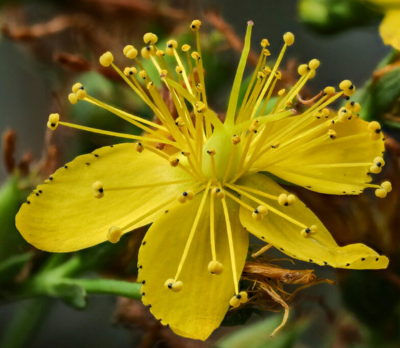
St. John’s Wort is a yellow, star-shaped flower native to Europe, named after John the Baptist. Used for centuries to support mental health, it acts as a serotonin reuptake inhibitor, similar to antidepressant medications used for depression, anxiety, and other psychological conditions. The flowers are used to make extracts, pills, and teas. They contain hypericin, found in the reddish-black dots on the petals, which has antidepressant effects and helps ease anxiety, sleep disorders, and depression. The leaves contain compounds that regulate dopamine, serotonin, melatonin, monoamine-oxidase, and interleukins. St. John’s Wort is also used for menopausal symptoms, and studies show it may help with sleep deprivation-induced anxiety and oxidative stress.
Key Benefits
- Anti-Anxiety – St John's Wort is considered a popular medicine to treat anxiety.
- Anti-Depressant: It is known for its effectiveness for mild or moderate depression.
- Eases symptoms of Menopause and Pre-menstrual syndrome.
- It is used to treat people who suffer from Hyperactivity and Impulsivity.
- Has antibacterial properties and may act as an antiviral agent.
- Benefits sleep by helping regulate mood and increasing the production of melatonin. Leaves of the Hypericum contain antidepressant compounds that regulate levels of dopamine, interleukins, melatonin, monoamine-oxidase, and serotonin.
Cultivation:
Eastern regions of China
Extraction Process
has been standardized for 0.3% hypericin using a 20:1 herb ratio
Clinical studies
- Depression: A retrospective, 12-month, open-label, observational, controlled trial was conducted by Francesco Di Pierro of the Department of Scientific Research and Development, Velleja Research, Italy to study the antidepressant clinical activity of a Hypericum Perforatum. The study administered that hypericum extract gave better clinical outcomes in volunteers with depression without determining an increased risk of toxicity or reduced tolerability.
- Depression and menopausal symptoms: Randomized controlled study was conducted on 80 postmenopausal women aged 45-60 in Izeh, Iran by Alieh Eatemadnia of Midwifery Department, Menopause & Andropause Research Centre. Two groups received 270-330 μg of Hypericum perforatum(n = 40) or placebo (n = 40) tablets three times a day for two months. Seventy women completed the study and the results show that the treatment with Hypericum perforatum is an efficient way of reducing hot flashes, menopausal symptoms, and depression in postmenopausal women.
- Depression and tiredness: A randomized, placebo-controlled, double-blind study was conducted by W D Hübner , S Lande, H Podzuweit from Lichtwer Pharma GmbH, Berlin, Germany. The study was done on 39 patients with depression with somatic symptoms who were treated with Hypericum perforatum extract LI 160. The volunteers were administered with hypericum extract 300 mg dose thrice a day for 4 weeks. Seventy percent of the patients treated with LI 160 were free of symptoms after 4 weeks. Typical symptoms of depression such as lack of activity, tiredness, fatigue, and disturbed sleep, were especially responsive. In no case were any undesirable side effects observed.
- Fatigue: A randomized, double-blind, parallel-group comparison was done among 240 subjects with mild-moderate depression was done by E Schrader from Praxis Klinische Arzneimittelforschung, Pohlheim, Germany. The patients were treated with hypericum and fluoxetine. After 6 weeks' treatment, it was concluded that hypericum and fluoxetine are equipotent with respect to all main parameters used to investigate antidepressants in this population, although hypericum may be superior in improving the responder rate.
- Sleep Inducing: A study was conducted by A.L. Sharpley, C.L. McGavin, R. Whale P.J. Cowen of the University Department of Psychiatry, Warneford Hospital, UK using healthy volunteers having no history of psychiatric or sleep disorders. They were administered with two doses (0.9 mg and 1.8 mg) of Hypericum perforatum (St John's wort) on the sleep polysomnogram using a placebo-controlled, cross-over design. Both doses of hypericum significantly increased the latency to rapid eye movement (REM) sleep without producing any other effect on sleep architecture.
Vidarikand
Latin Name: Pueraria Tuberosa
Part Of Plant Used: Tubers
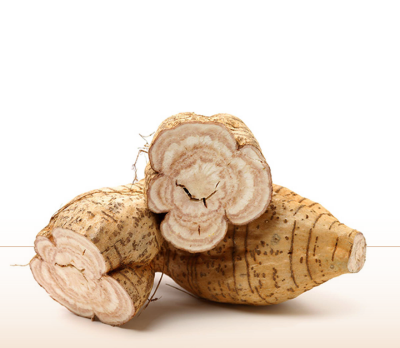
Vidarikand, also known as Indian Kudzu, is a perennial herb native to India, Pakistan, and Nepal. Its sweet-tasting, starchy white tubers grow wild in the forests and riverbanks of the Himalayas, Mount Abu, Punjab, Sikkim, and Central India, with the wild variety considered the most potent. With striking purplish-blue flowers and roots rich in bioactive compounds, Vidarikand is a powerhouse in Ayurveda. It supports both male and female reproductive health, helps with skin issues, heart health, digestion, fevers, allergies, asthma, and rheumatoid arthritis. Traditionally used for centuries, it’s now gaining traction in modern medicine through ongoing clinical research.
Key Benefits
- Galactagogue Effect: Vidarikand is considered a potent galactagogue, which means it helps stimulate the production of breast milk. This property makes it beneficial for lactating mothers who may have low milk supply.
- Hormonal Balance: The herb helps in balancing hormones, particularly prolactin and oxytocin, which are crucial for milk production and ejection. This hormonal balance can enhance both the quantity and quality of breast milk.
- Nutrient-Rich: Vidarikand is rich in essential nutrients such as vitamins, minerals, and proteins, which are vital for the overall health of the mother and the nutritional quality of the breast milk.
- Stress Reduction: The adaptogenic properties of Vidarikand help in reducing stress and anxiety. Lower stress levels can positively impact lactation, as stress can inhibit the milk ejection reflex.
- Improved Digestion: It aids in improving digestion and metabolism, ensuring that the nutrients consumed by the mother are effectively absorbed and utilized for milk production.
- Enhanced Immunity: The herb boosts the immune system, which is beneficial for both the mother and the baby. A strong immune system helps in preventing infections that could affect lactation.
- Overall Maternal Health: Vidarikand supports the overall health and well-being of lactating mothers by providing energy, reducing fatigue, and improving physical strength, all of which contribute to better lactation.
Cultivation:
Odisha, India
Extraction Process
has been standardized for: 2% Flavonoids using a 10:1 herb ratio and ensuring the content of natural steroids remains intact in the extraction process
Clinical studies
- As galactagogue: Low milk supply (stanyakshaya) is a common issue among new mothers, with incidence rates ranging from 10% to 25%. In Ayurveda, breast milk, termed PIYUSH or amrit, is vital for enhancing life, and its deficiency can lead to low immunity, poor growth, and dehydration in infants. Formula feeding, while an alternative, has adverse effects on babies. A case study of a 28-year-old woman with low milk supply for one month demonstrated significant improvement through oral medications (1. Shatavari churn 3gm + vidarikand churn 3 gm bid with milk for 21 days, 2. Magadhi(pimpli) 2gm + nagar(sounth)2gm + gud (jaggery)+ ghrut (butter) + doogdh (milk) ) with galactagogue properties, dietary modifications, and proper breastfeeding techniques, resulting in adequate breast milk supply.
- Improved Foetal growth: In modern medicine, the treatment of intrauterine growth restriction (IUGR) focuses on maternal and fetal weight gain through rest, oxygen therapy, glucocorticoids, high-protein diets, hydration, and pharmacological therapies like low-dose aspirin and various forms of hyperalimentation. However, these treatments are costly, time-consuming, and can have severe side effects on pregnant women, with no proven method to reverse growth restriction. This has led to increased interest in Ayurveda, where IUGR, known as Upavishtak, is treated based on the principles of rasa, vipak, guna, and veerya of drugs like vidarikand. The goal is to achieve a healthier mother and, consequently, a healthier child. Total no. of 60 patients with upavishtaka were selected and divided into 2 groups. Group A patients were treated with Vidarikanda Siddha Ghrita along with the standard protein supplement and group B patients were treated with standard protein supplement. Group A patients showed better Ponderal index, Growth rate, abdominal circumference, weight of mother, fundal height, ponderal index and birth weight.






